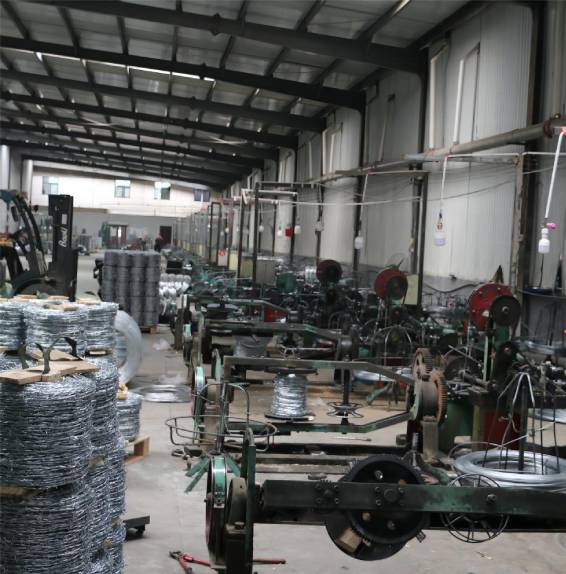Trends in Iron Binding Wire Prices for the Upcoming Year
The Factors Influencing Iron Binding Wire Prices
Iron binding wire is an essential material used across various industries, mainly in construction, agriculture, and manufacturing. Its primary function is to bind and secure different materials, facilitating safe transportation and stability in various applications. As with any raw material, the price of iron binding wire is influenced by a multitude of factors. Understanding these elements can provide valuable insights for businesses and consumers alike.
1. Global Iron Ore Prices
The primary ingredient in iron binding wire is iron ore. The fluctuations in global iron ore prices, influenced by supply and demand dynamics, have a direct impact on the cost of iron binding wire. Countries like China, Brazil, and Australia dominate the iron ore market, and any significant changes in their production levels or export policies can lead to price shifts. For instance, if a major producer experiences a supply disruption due to environmental regulations or geopolitical tensions, we can expect iron ore prices to spike, subsequently increasing the cost of iron binding wire.
2. Production Costs
The manufacturing process of iron binding wire involves not just the cost of raw iron but also energy, labor, and operational expenses. Increased energy costs, whether due to fluctuating oil prices or regulatory changes in energy consumption, can elevate production costs for manufacturers. Similarly, if labor costs rise due to wage increases or shortages in skilled labor, these costs will often be passed down the supply chain, resulting in higher prices for iron binding wire.
3. Demand in Key Industries
The demand for iron binding wire is closely linked to the performance of key industries such as construction and agriculture. For instance, during periods of economic growth, construction projects typically surge, leading to an increased need for binding wire for various applications, from securing rebar to fencing. Conversely, in times of economic downturn, demand may wane as construction projects are delayed or canceled, impacting the pricing dynamics. Additionally, the agricultural sector's needs, such as binding crops or repairing fencing, can also exert influence on demand levels.
iron binding wire price

The competitive landscape within the iron binding wire market further affects pricing. A concentrated market with few dominant players can lead to price stability, while a fragmented market may lead to price wars among manufacturers. Additionally, the entry of new competitors can disrupt established pricing structures. Companies that innovate in materials or production processes may also offer lower prices, prompting others to adjust their pricing strategies to remain competitive.
5. Environmental Regulations
Environmental and sustainability concerns have become increasingly significant in recent years, impacting production methods and costs. Manufacturers are often required to invest in cleaner technologies or processes to reduce emissions and waste. While these initiatives are important for environmental conservation, they can also increase the overall cost of production, resulting in higher prices for the end consumer.
6. Market Speculation
Like many commodities, iron binding wire prices can be affected by market speculation. Traders and investors often react to news, forecasts, and trends, which can lead to price volatility. For example, if speculators believe that iron ore prices will rise due to anticipated demand in the construction sector, they may drive up the prices of related products, including iron binding wire.
7. Currency Fluctuations
Finally, as iron binding wire is often traded on international markets, currency fluctuations can also impact pricing. A weaker domestic currency can make imports more expensive, leading to an increase in prices for domestic consumers. Conversely, a stronger currency may lower the cost of imports, potentially stabilizing or decreasing prices.
Conclusion
In summary, the pricing of iron binding wire is a multifaceted issue influenced by various factors, including raw material costs, production expenses, industry demand, competition, regulatory frameworks, market speculation, and currency stability. For businesses involved in the purchase or sale of iron binding wire, staying informed about these factors is crucial for making strategic financial decisions and maintaining profitability. As markets continue to evolve, a proactive approach to understanding these dynamics will be essential in navigating the complexities of iron binding wire pricing.
-
Innovations in Razor Barbed Wire Design TechnologyNewsAug.11,2025
-
Roofing Nail Compatibility with Different Metal Roof TypesNewsAug.11,2025
-
Welded Wire Mesh for Rockfall Protection BarriersNewsAug.11,2025
-
Galvanized Wire Corrosion Resistance TestingNewsAug.11,2025
-
3D Fence Solutions Preventing Bird CollisionsNewsAug.11,2025
-
Using Chain Link Fence for Urban Garden SupportNewsAug.11,2025




